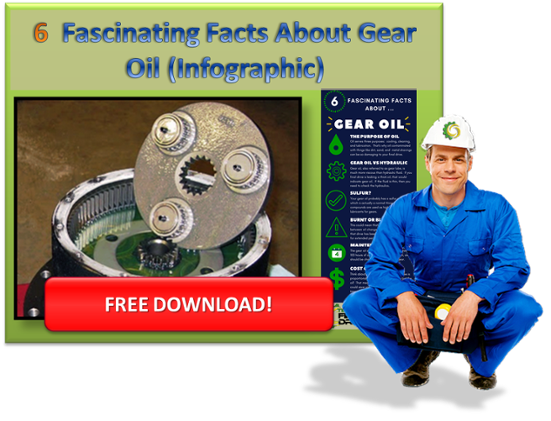Wear can have a big impact on the life and performance of your final drive motor, but there are certain ways to minimize that impact.
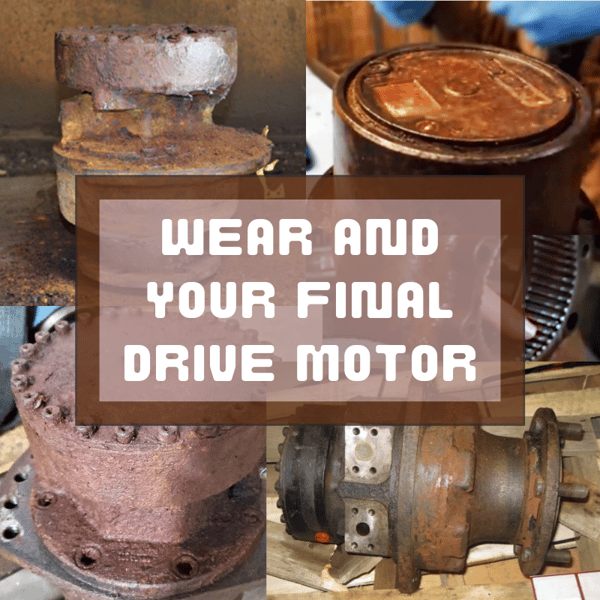
Here are a few other Shop Talk Blog posts you might be interested in:
- Lubricants: An Investment in Your Heavy Equipment
- Results of Hydraulic Contamination
- 6 Sure Ways to Sabotage Your Final Drives
Definition of Wear
The term wear is used to refer to the deformation of component surfaces that result from use. Wear cannot be completely avoided, but it can be accelerated. Over time, wear can destroy the usefulness of certain parts.
Types of Wear
There are several different types of wear that the parts within a final drive motor can experience. In this section, we are going to discuss these forms of wear and what causes them.
Abrasive Wear
Abrasive wear occurs when surface material is lost due to contact during sliding motion. It usually take the form of scratches and grooves, and is common when there are hard particles contaminating the hydraulic fluid or lubricants. Abrasion also occurs when there is a rough surface finish present or insufficient lubrication.
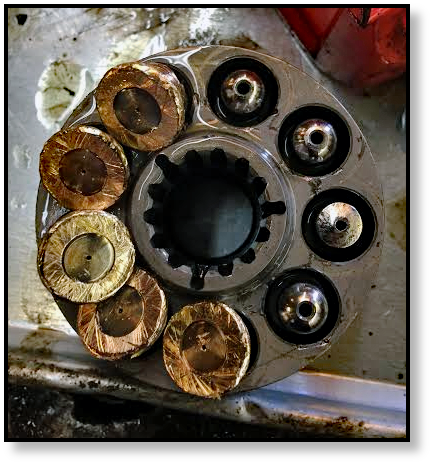
Here you can see an extreme example of abrasive wear.
Adhesion Wear
Adhesion occurs when two hard surfaces interact under heavy loads. The materials essentially stick together, and when forced apart they generate small particles of metal debris. Adhesion also leads to a rougher surface finish, which makes adhesion even more likely. A lack of lubrication can worsen the effects of adhesion.
Fretting Wear
Fretting wear can occur when their is very small oscillating or vibratory motions between two surfaces. When fretting occurs, the lubricant has been forced out from between the surfaces and the surfaces come into direct contact with each other. It often occurs between joints that are bolted, press-fitted, keyed, riveted, or pinned. Fretting wear is much worse when there is moisture or water present.
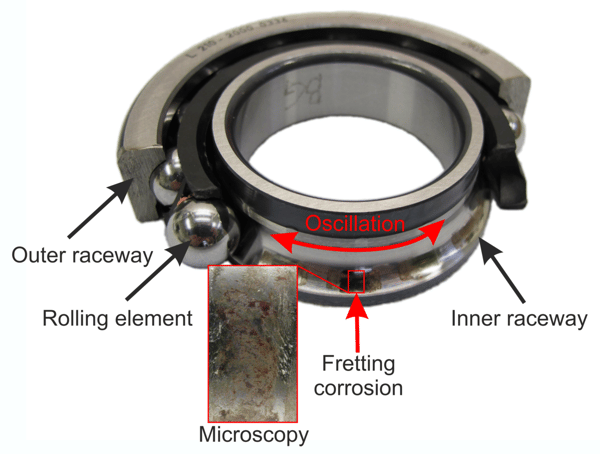
Here is an excellent example of fretting and fretting corrosion.
Fabian Schwack, Felix Prigge, CC BY-SA 4.0, via Wikimedia Commons
Erosive Wear
Erosive wear is the result of sharp particles continuously impacting a surface. While it initially leads to a change in surface finish, over time it can significantly change the geometry of a part. Erosive wear is likely to occur when sharp, hard, or abrasive debris have contaminated hydraulic fluid moving at high speeds or under high pressures.
Surface Fatigue
Surface fatigue can result when there are cyclic loadings. These loading begin to weaken the surface of the material, forming tears, cracks, or small holes. It is made worse by the presence of dirt, grit, and particle contamination. Once surface fatigue starts, it only gets worse and can result in broken parts.
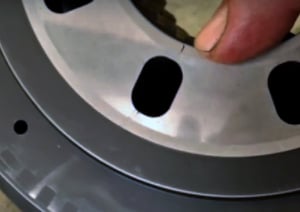
Here you can see a tiny surface fatigue crack that can grow at incredible speeds.
Minimizing the Impact of Wear
There are certain things you can do to minimize wear within your final drive motor.
One of the key aspects of preventing abrasive, adhesive, and fretting wear, as well as surface fatigue, is to make sure everything is lubricated correctly. Using the right kind of lubricant is the first step, and having enough lubricant present in the second step. When the lubricant is working correctly, it can prevent much of the surface-to-surface contact that leads to wear.

If your gear oil looks like this, it isn't doing your final drive any good.
This includes the gear hub, where speed is converted into enough torque to move your machine. For the gear hub, that means using enough of the right type of gear oil. It also means making sure the gear oil stays clean and is changed regularly. Old gear oil -- think sludge or a pudding-like texture -- will do more damage than good.
Hydraulic fluid serves as lubricant on the hydraulic side of your final drive motor. It is also important to make sure you are using the right hydraulic fluid for your equipment, replacing it as recommended by the manufacturer, and flushing it when it becomes contaminated. And you also want to keep your work area clean when opening up your hydraulic system, including pumps, drive motors, and hydraulic lines.
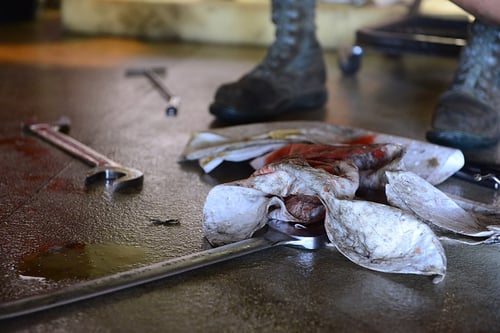
A clean workspace with clean tools and materials are vital to ensuring that contamination doesn't make its way into your hydraulic system.
Abrasive particles in your hydraulic fluid or gear oil play a major role in wear. Erosive wear, for example, can impact the hydraulic side of your final drive motor if particulate matter is in the fast moving hydraulic fluid. When particles of contamination get trapped between contacting surfaces, it can result in abrasion, fretting, and surface fatigue.
The rate of wear inside your final drive motor can be greatly reduced by avoiding contamination in both the hydraulic fluid and gear oil. The major source of contamination lies in leaking seals: if fluid can leak out, then dirt, dust, sand, grit, and other abrasive substances can make their way inside.
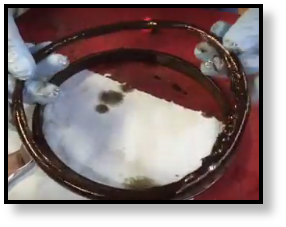
Damaged or worn out seals should be replaced as quickly as possible to prevent contamination.
As wear continues, your final drive can start generating its own contamination. And generated contamination can do quite a bit of damage before its caught by hydraulic filters. Keeping wear under control can prevent most of this type of contamination.
Conclusion
Hydraulic motors are always going to experience wear, but that can be minimized through wise maintenance. Lubrication and preventing contamination are the keys to helping your final drive motors last as long as possible.

